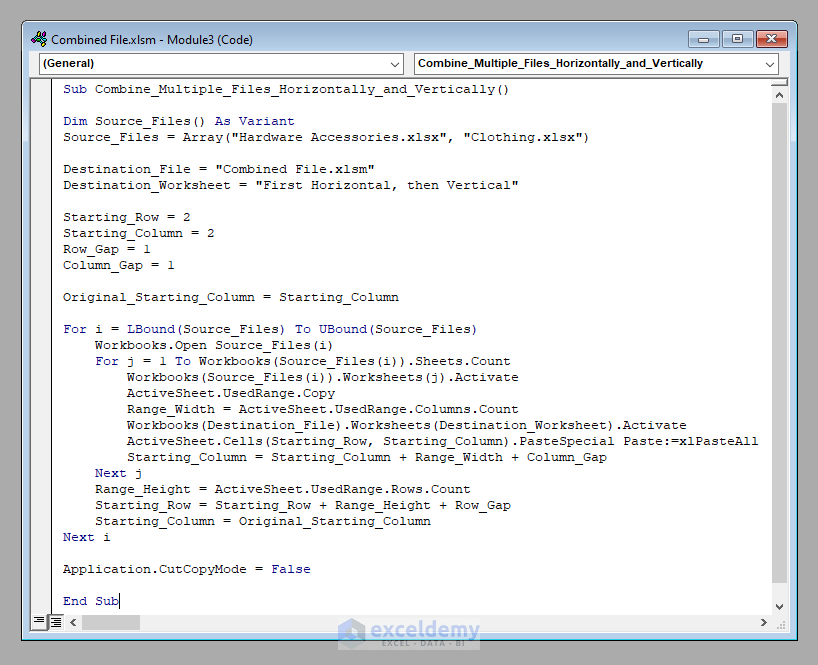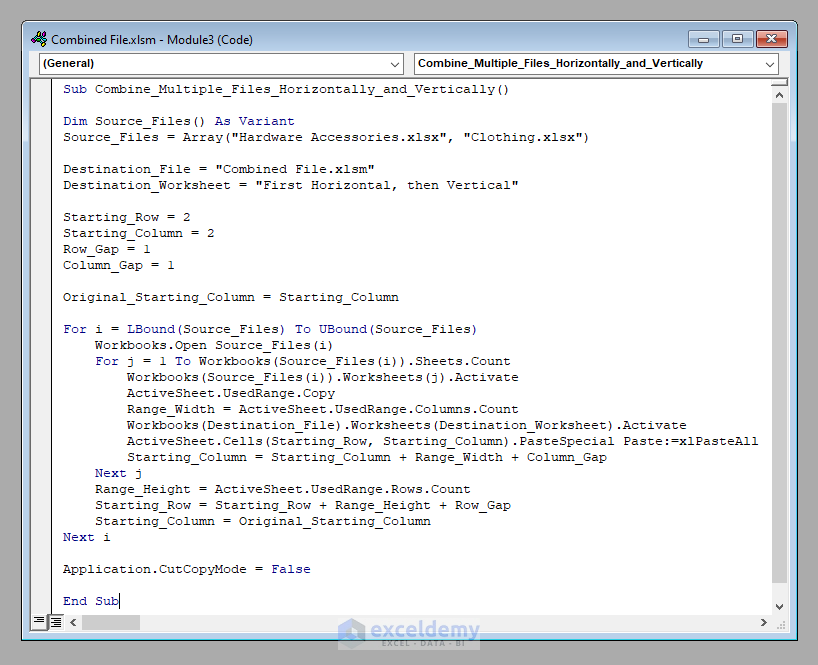3 Ways to Merge Multiple Excel Files Into One Sheet Easily

Do you often find yourself needing to consolidate Excel data from multiple spreadsheets into a single comprehensive sheet? Whether you're compiling financial records, organizing sales data, or managing any large dataset, merging multiple Excel files can streamline your workflow immensely. This article will guide you through three effective methods to merge Excel files, ensuring your data analysis or reporting tasks become more efficient.
Method 1: Using Excel’s Built-In Features

Excel’s own tools can simplify merging spreadsheets. Here’s how:
- Open Excel: Start by opening a blank workbook or any workbook where you want to consolidate your data.
- Data Tab: Click on the ‘Data’ tab in the ribbon.
- Get External Data: Under the ‘Get & Transform Data’ group, select ‘From Text’ if your files are in CSV format, or ‘From File’ if they are Excel files.
- Navigator: In the Navigator window, you can see all the sheets from the selected workbook. Check the sheets you want to import or click ‘Transform Data’ to make adjustments before importing.
- Append Queries: If you have multiple files, repeat the process, appending each to the first query to create a single, large table.
- Close & Load: After appending all desired files, select ‘Close & Load’ to bring the consolidated data into your workbook.
Method 2: Utilizing VBA Scripting

VBA (Visual Basic for Applications) scripting provides a more customizable approach for merging Excel files:
- Open Excel: Launch Excel with a new or existing workbook.
- Developer Tab: Enable the Developer tab if it’s not already visible.
- VBA Editor: Press
Alt + F11to open the VBA Editor. - Insert Module: Right-click on any of your workbook’s project in the Project Explorer, go to ‘Insert’ and choose ‘Module’.
- Code: Paste or write the following VBA code:
Sub MergeFiles() Dim FolderPath As String Dim FileName As String Dim Sheet As Worksheet Dim TargetWorkbook As Workbook Dim SourceWorkbook As Workbook Dim NextRow As Long Dim Folder As FileDialog' Set the folder path Set Folder = Application.FileDialog(msoFileDialogFolderPicker) If Folder.Show = -1 Then FolderPath = Folder.SelectedItems(1) & "\" Else: Exit Sub Set TargetWorkbook = ThisWorkbook ' Loop through each file in the folder FileName = Dir(FolderPath & "*.xls*") Do While FileName <> "" ' Open each file in the folder Set SourceWorkbook = Workbooks.Open(FolderPath & FileName) For Each Sheet In SourceWorkbook.Sheets ' Find next empty row in target workbook NextRow = TargetWorkbook.Sheets(1).Cells(TargetWorkbook.Sheets(1).Rows.Count, 1).End(xlUp).Row + 1 ' Copy data from source workbook to target workbook Sheet.UsedRange.Copy TargetWorkbook.Sheets(1).Cells(NextRow, 1) Next Sheet ' Close the source workbook SourceWorkbook.Close False FileName = Dir() Loop
End Sub
Alt + F8, select ‘MergeFiles’, and run it.🔎 Note: Make sure to backup your files before running any scripts to prevent data loss.
Method 3: Using Power Query

Power Query is a powerful data manipulation tool in Excel. Here’s how to use it to combine files:
- Data Tab: Click on the ‘Data’ tab, then select ‘Get Data’ > ‘From File’ > ‘From Folder’.
- Choose Folder: Browse to and select the folder containing your Excel files.
- Combine Files: Click ‘Combine’ and choose the type of data you want to combine.
- Select Columns: In the Power Query Editor, choose which columns you want to merge. You can perform transformations here as well.
- Load to Excel: Once done, click ‘Close & Load’ to add the merged data as a new sheet in your workbook.
| Method | Pros | Cons |
|---|---|---|
| Built-in Features | - Easy to use for simple datasets - No need for coding |
- Limited customization - Can be slow with large datasets |
| VBA Scripting | - Highly customizable - Can handle complex merging scenarios |
- Requires VBA knowledge - Macro security settings might prevent running |
| Power Query | - Powerful data transformation tools - Can merge multiple files at once |
- Steeper learning curve - Limited by system resources |

The end result of these methods provides you with a single Excel sheet containing data from all your files, making data analysis or reporting much more straightforward. Each method has its strengths, catering to different levels of user expertise and the complexity of data handling tasks.
In summary, merging multiple Excel files into one sheet enhances productivity and data integrity. Whether you choose to use Excel's native functions, employ VBA for intricate scenarios, or harness the capabilities of Power Query, these techniques will help you efficiently consolidate your data. Remember that each approach has its nuances, and your choice should align with the task at hand, your comfort level with Excel, and the nature of your data.
Can I merge files with different structures?

+
Yes, you can use Power Query to transform and align data from files with different structures into a unified format before merging.
Do I need VBA knowledge for the script method?

+
While having VBA knowledge is helpful, the script provided here can be used directly. However, any customization or troubleshooting would require some understanding of VBA.
What if my files are in different formats?

+
Power Query can handle different file formats like .xlsx, .csv, .txt, etc. Just ensure you select the correct format when importing.